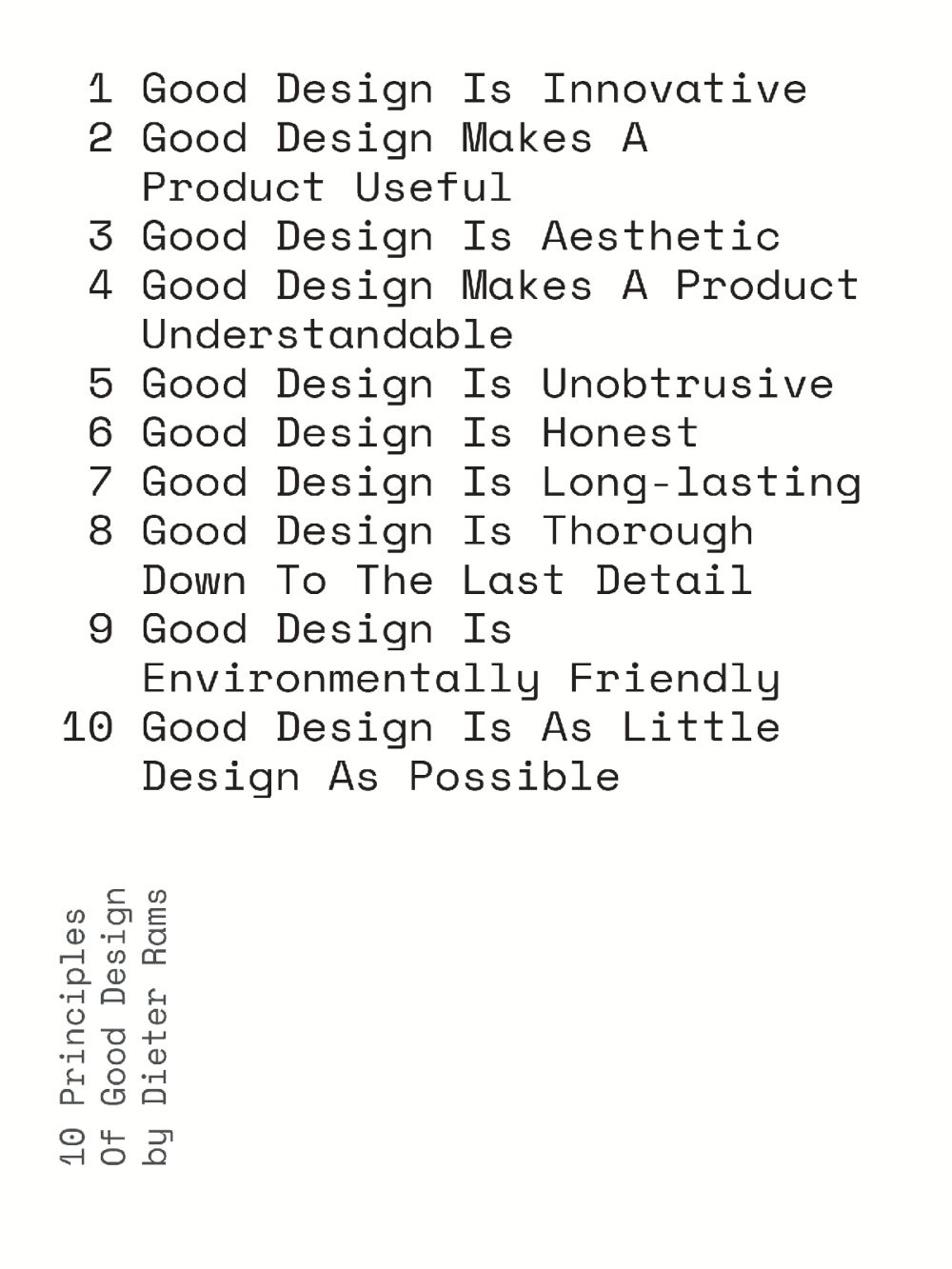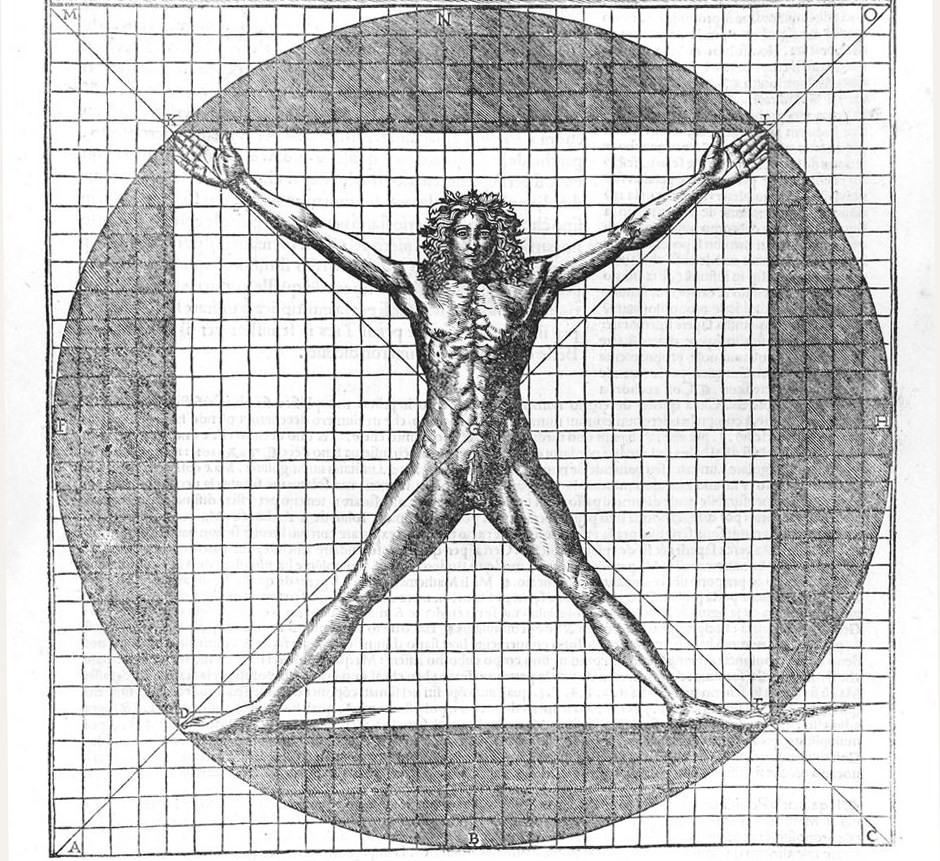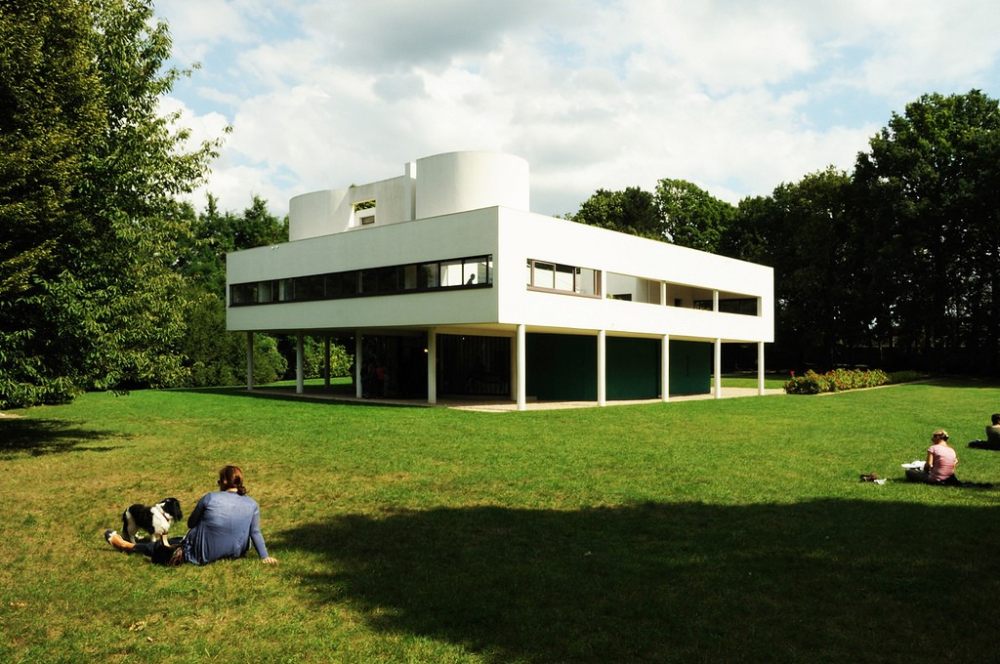 Dieter Rams, Ten Principles of Good Design - image courtesy of Build Studio
Dieter Rams, Ten Principles of Good Design - image courtesy of Build Studio
 Vitruvius, Vitruvian Man
Vitruvius, Vitruvian Man
 Le Corbusier, Villa Savoye
Le Corbusier, Villa Savoye
 Ilse Crawford, A Frame for Life
Ilse Crawford, A Frame for Life
With the London Design Festival in full flow, we’re thinking about the principles and philosophies that make for good design.
Here is a selection of some of our favourite design manifestos:
Dieter Rams: The Ten Principles of Good Design
Less but better – Dieter Rams’ 10 principles remain an iconic guide to good design. With an emphasis on simplicity and sustainability, his influential ethos continues to inform timeless classics.
Vitruvius: De Architectura
Human proportions – The classical treatise ‘De Architectura outlined the notion of perfect proportion, made famous by the Vitruvian Man. The Vitruvian virtues celebrated the qualities of solidity, utility and beauty and encouraged architecture to mirror the proportion and symmetry of the ideal human body.
Adolf Loos: Ornament is Crime
Ornament is obsolete – Loos’ seminal essay ‘Ornament and Crime denounced the fashion for excessive ornament in favour of timeless designs that incorporated ‘smooth and precious surfaces’. A forebear of the ideas that defined the Modernist movement, the influence of these principles is reappraised in The Modern Houses own visual manifesto ‘Ornament is Crime. Read highlights here.
Walter Gropius: Bauhaus Manifesto
Better together – As Walter Gropius declared in the Bauhaus Manifesto of 1919: ‘The ultimate aim of all visual arts is the complete building! With an emphasis on architecture as a ‘total work of art, the Bauhaus challenged the division and distinction of individual arts practices, working to reunify art, architecture and the artisan for future building.
Le Corbusier: The Five Points
Machines for living – The most influential architect of the twentieth century, Le Corbusier sought to establish new ways of living that responded to models of mass production. ‘The Five Points of a New Architecture formulated the fundamental principles of his design philosophy. Most closely realised in the Villa Savoye, they advocated the use of supportive concrete columns to elevate buildings from the ground, the removal of internal walls for adaptable living space, the use of horizontal windows to flood spaces with natural light, the installation of accessible roof gardens and creative freedom in the design of façades.
Ilse Crawford: A Frame for Life
Smell, Hear, Feel – A pioneer of the holistic design movement, Ilse Crawford’s approach to design and living puts human behaviour and experience at the centre of the creative process. Her aim is to create multi-sensory, sensual environments which have the power to cultivate greater physical and emotional wellbeing.
F.R.S. Yorke: The Modern House
Design adds value – The inspiration for our estate agency came from ‘The Modern House, an influential book written by architect and author F.R.S. Yorke in 1934. Yorke introduced the principles of the Modern movement to the United Kingdom, such as the idea that flowing space and natural light could lift the spirits and enhance our experience of everyday life. He was also a close friend of the celebrated modern architect Frederick Gibberd. Read a personal account of Frederick Gibberd written by his grandson and Founding Director of the Modern House, Matt Gibberd here.
Our unique approach to curating and marketing design-led properties means that The Modern House has consistently out-performed the market and transformed the experience of buying and selling homes for the better.
If you own or are interested in purchasing an exceptionally well-designed home, we invite you to explore our current sales listings or contact us for a free valuation.
- 转载自:The Modern House
- 语言:English
- 阅读原文
|

 发表于 2020-8-4 03:43:51
发表于 2020-8-4 03:43:51














